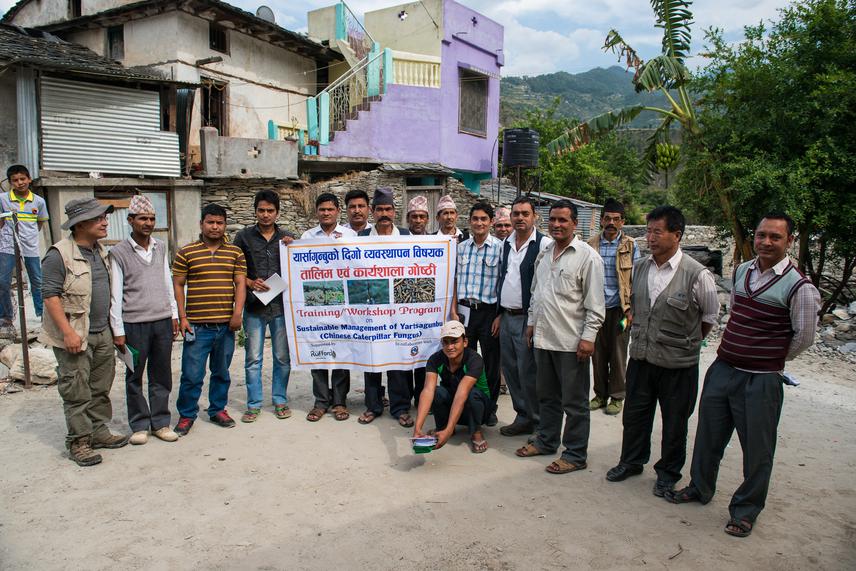Article featuring the project.
Scientific American - Yarsagumba: Aphrodisiac Fungus Faces Extinction in Nepal
23 Feb 2011 Dolpa, Nepal, Indian Sub-continent Plants
Distribution Modelling and Conservation of Caterpillar Fungus (Ophiocordyceps sinensis)
Tragedy to Triumph: Understanding the Role of Community Institutions for Sustainable Management of Chinese Caterpillar Fungus
This study intends to explore ecological, economical, and enthnobiological aspects of Cordyceps for sustainable resource management.

The caterpillar mushroom popularly called Cordyceps (Ophiocordyceps sinensis) is well known for its unique life history and enormous market value. It is a parasitic fungus grows on the body of caterpillar of the ghost moth species belonging to genus Thitarodes. The Cordyceps is perhaps among the most valuable natural resources in the world and plays a significant role to the household and national economies of its native habitat, the Himalayas. Due to the unprecedented collection and possibly of climate change, the availability of this resource in the natural habitat has sharply declined or completely lost in some areas in recent years. Despite of the huge economic, ecological, and cultural importance of Cordyceps and despite of rapid degradation, very little is known about the life history, diversity, distribution, extraction method, contribution to local livelihood and economy, market and benefit sharing mechanism, traditional use and management practice. The depletion of the Cordyceps will have severe economic, environmental, and cultural consequences. Therefore, sustainable management of Cordyceps becomes a major concern.
With better understanding of ecology and management of wild populations, Cordyceps could sustain livelihoods for the people living in the high mountain regions where agricultural and other natural resource based alternatives are meager due to low productivity of the land. While promoting natural resources like Cordyceps for livelihoods improvement and making a conservation plan, the complex interrelationship between Cordyceps-environment-human systems have to be understood. This study will integrate ecological, economical, and social parameters to understand the complex link between Cordyceps-human-environment systems. Field study will be carried out in Dolpa, Nepal for ecological study and socio-economic surveys.
This study will document natural history and ecology of the Cordyceps with respect to environmental changes. It will investigate and model the impact of climate change and land use change on the ecology and distribution of Cordyceps in different climate and land use scenarios. It will examine the local collection practices, trade routes, market prices at various stages of trade, accessibility to resource regime, and benefit sharing mechanism among the collectors, local, and international traders and measure the contribution of Cordyceps to household income, local, and national economy. Results will be communicated to the government agencies, academic institutions, and other stakeholders in the form of policies recommendation, research papers, and popular articles. Finally, a policy recommendation for sustainable management of Cordyceps will be produced.
Article featuring the project.
Scientific American - Yarsagumba: Aphrodisiac Fungus Faces Extinction in Nepal